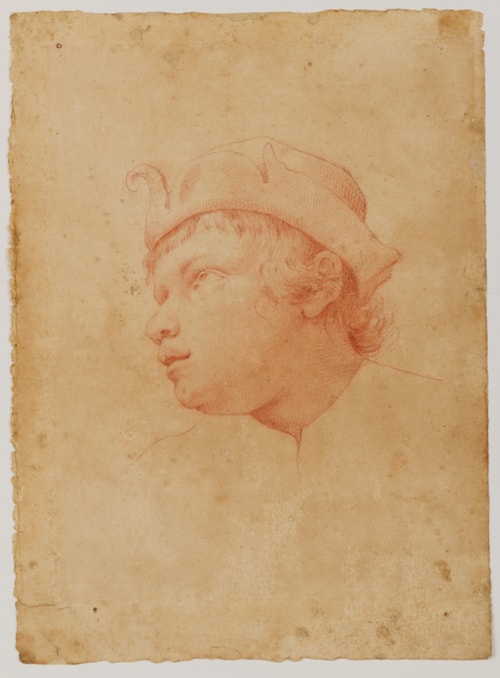
Carlo DOLCI
Florence 1616 - Florence 1687
Biography
Carlo Dolci’s close friend, pupil and early biographer Filippo Baldinucci provides a fairly complete and thorough account of the painter’s life, written shortly after his death. A precocious artist, Dolci entered the studio of the painter Jacopo Vignali in 1625, at the age of nine, and within a few years was producing some striking independent portraits. Dolci probably left Vignali’s studio in the early 1640s, and in 1648 was admitted into the Florentine Accademia del Disegno. He soon became one of the leading painters in 17th century Florence, enjoying a career that lasted some sixty years. Baldinucci notes that he was a particularly devout man, and this is reflected in much of his work. The largest part of Dolci’s output, and the work for which he was best known, are his religious and devotional pictures, characterized by a meticulous and refined technique, rich colour, a jewel-like clarity and a high degree of finish. (In his 1677 guide to Florence, Giovanni Cinelli described the artist’s work as ‘pittura bellissima e rara’.) Furthermore, as one modern scholar has noted, ‘Dolci catered to the opulent taste of the Medici Grand-ducal court, embellishing his ecstatic, melancholy or tender figures with splendid jewels, gorgeous materials and flowers, real gold and precious ultramarine.’
Since he worked very slowly (a trait that led to some stinging criticism from Luca Giordano), Dolci produced relatively few paintings a year. These were much sought-after, particularly among the aristocracy and nobility, and he became one of the most highly-paid painters in Florence. Chief among his important patrons was Vittoria Della Rovere, Grand Duchess of Tuscany, and her son, the Grand Duke Cosimo III de’ Medici, along with several other members of the Medici family as well as other important Florentine noble families, such as the Corsini, Ginori, Salviati and Quaratesi. Although Dolci worked for almost his entire career in Florence, his reputation travelled well beyond Tuscany, and he received numerous commissions and sold several works to Venetian and English collectors. A chronology of his oeuvre is made easier by the fact that he often inscribed on the backs of his paintings the date that the canvas was begun or completed, and sometimes the name of the patron. Dolci’s paintings were widely copied after his death, which led to a decline in his reputation in later years.


